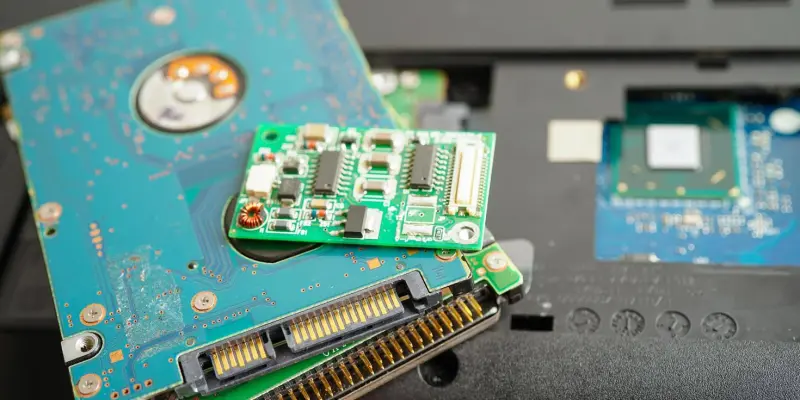As the realm of digital storage constantly seeks to achieve a balance between compactness, efficiency, and performance, the emergence of the Suneast Portable SSD Nano is pivotal in advancing portable technology. This device, touted as the world’s smallest external SSD, weighs a mere 2.8 grams and boasts dimensions akin to a small coin. Offering up to 512GB of storage, it provides read speeds of 450MB/s and write speeds of 400MB/s. While the Suneast Portable SSD Nano may not rival larger SSDs in sheer performance, its unobtrusive design caters to the modern demand for discreet and easy storage solutions. Its compact size is advantageous for those desiring convenience without the encumbrance of bulkier devices. Undoubtedly, its existence heralds a discussion on portable storage’s future direction, challenging perceptions of practicality versus performance.
Design and Compatibility Aspects
Navigating the world of small-scale digital storage reveals the intricacies surrounding design, functionality, and compatibility. The Suneast Portable SSD Nano exemplifies discretion in design, melding seamlessly with laptops and mobile devices and fitting nearly flush when inserted. It’s this subtlety that drives interest; it meets the broad compatibility requirements modern users anticipate. Properly formatted in exFAT, the SSD assures plug-and-play ease across major platforms, including Windows PCs, macOS, Linux, Android 14 and newer systems, plus USB-C iPhones and iPads. For consumers desiring fluid transitions between device environments, this compatibility is a significant factor, simplifying the challenge of connecting to and operating on varied systems without tedious formatting or conversion processes. The ease with which it integrates into diverse environments presents the drive as more than a mere novelty or accessory. It caters to the increasing need for portable, adaptable storage solutions as users navigate multilayered tech ecosystems demanding efficiency without sacrificing convenience or versatility in storage applications.
Market Trends and Consumer Demands
Market analysis reveals that trends increasingly favor ultra-portable devices combining minimalism with practicality. Such developments underscore the delicate balance between size and functionality, striving for inventive solutions suited to an evolving digital landscape. The Suneast Portable SSD Nano encapsulates this pursuit, offering visible advantages in portability while remaining a secondary storage solution due to its capacity limitations. Unlike devices tailored for high-end content creation or demanding gaming applications, the Nano aligns closely with consumers seeking compact, efficient tools for ordinary storage tasks. This approach acknowledges the growing demand among consumers for lightweight, easily transportable devices, blending performance with size without skewing entirely toward either aspect. While the Nano redefines aspects of portable storage, this reflects broader trends amidst technology: leveraging design features to address specific, immediate user needs without major trade-offs. As storage device innovation continues, there is anticipation surrounding potential shifts meeting varied consumer demands alongside ongoing advancements in digital media. Awareness surrounding these developments could guide future designs toward improved versions, gradually balancing size constraints against operational utility in everyday tech applications.
Reevaluating Storage Solutions
In the quest to balance size, efficiency, and performance in digital storage, the Suneast Portable SSD Nano has emerged as a groundbreaking device. Recognized as the tiniest external SSD globally, this gadget weighs just 2.8 grams and matches the dimensions of a small coin. It can store up to 512GB, rendering read speeds at 450MB/s and write speeds at 400MB/s. While the Suneast Portable SSD Nano doesn’t compete with larger SSDs in terms of raw performance, its sleek design meets the modern preference for discreet storage solutions. Its petite footprint is a boon for anyone wishing to avoid the bulk of bigger devices. This innovation prompts a conversation on the trajectory of portable storage, particularly in the balance between practicality and performance.

